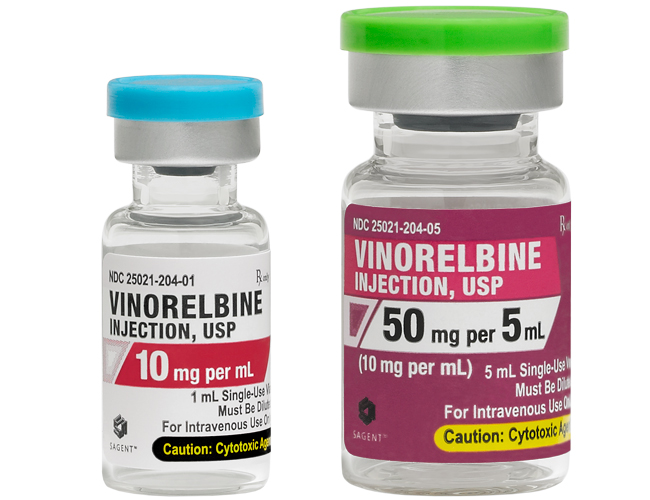
Vinorelbine, sold under the brand name Navelbine among others, is a chemotherapy medication used to treat a number of types of cancer. This includes breast cancer and non-small cell lung cancer. It is given by injection into a vein or by mouth More
Vinorelbine, sold under the brand name Navelbine among others, is a chemotherapy medication used to treat a number of types of cancer. This includes breast cancer and non-small cell lung cancer. It is given by injection into a vein or by mouth
Vinorelbine
Vinorelbine; Navelbine base; Vinorelbinum [Latin]; Vinorelbina [Spanish]; Navelbine
Navelbine, Relbovin, Vinbine, Vinelbine, Vinotec
methyl (1R,9R,10R,11R,12R,19R)-11-(acetyloxy)-12-ethyl-4-[(12S,14R)-16-ethyl-12-(methoxycarbonyl)-1,10-diazatetracyclo[12.3.1.0³,¹¹.0?,?]octadeca-3(11),4,6,8,15-pentaen-12-yl]-10-hydroxy-5-methoxy-8-methyl-8,16-diazapentac
NA
It is one of the types of vinca alkaloid used to treat various types of cancers including Hodgkin's disease, breast cancer, Kaposi's sarcoma, and testicular cancer. The vinca alkaloids are structurally similar compounds comprised of 2 multiringed units, vindoline and catharanthine. This drug binds to the mitotic spindle of the microtubular proteins, this leads to crystallization of the microtubule and mitotic arrest or cell death. Vinorelbine interferes with calmodulin-dependent Ca2+-transport ATPase activity, amino acid, cyclic AMP, and glutathione metabolism, cellular respiration, and nucleic acid and lipid biosynthesis.
For IV use only
For the treatment of non-small-cell lung carcinoma.
Neurotoxicity, peripheral paraesthesia, loss of deep tendon reflexes, abdominal pain, severe constipation, diarrhoea, alopecia, severe local irritation. Dose limiting granulocytopenia, leukopenia and anaemia. Intestinal obstruction, paralytic ileus, nausea, vomitinh, increased in LFT, chest pain, fatigue. Local pain and thrombophlebitis with repeated injection.
Store at 2-8°C.
778.9323
C45H54N4O8
71486-22-1